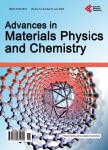Synthesis and Characterization of Poly(1-methoxy-4-octyloxy)-Para-Phenylene Vinylen for Light-Emitting Diodes Application
Synthesis and Characterization of Poly(1-methoxy-4-octyloxy)-Para-Phenylene Vinylen for Light-Emitting Diodes Application作者机构:Department of Chemistry Faculty of Liberal Arts and Science Kasetsart University Kamphaeng Nakhon Pathom 73140 Thailand
出 版 物:《Advances in Materials Physics and Chemistry》 (材料物理与化学进展(英文))
年 卷 期:2012年第2卷第4期
页 面:38-39页
主 题:Component Poly(1-Methoxy-4-Octyloxy)-Para-Phenylene Vinylen Gilch Polymerization Light-Emitting Diodes
摘 要:In this study, the conjugated polymer, poly(1-methoxy-4-octyloxy)-para-phenylene vinylene (MO-p-PPV) was synthesized and characterized. MO-p-PPV was synthesized according to Gilch polymerization mechanism by using 4-methoxyphenol as starting material in the presence of potassium tert-butoxide (1M in THF). The product was further purified by multiple precipitations in different solvents such as methanol, tetrahydrofuran, isopropyl alcohol and hexane. The final product was dried to afford MO-p-PPV as a red solid. The resulting polymer was completely soluble in common organic solvents. The structure of monomer and optical properties of polymer were characterized by proton nuclear magnetic resonance (1H-NMR) spectroscopy, UV-vis spectroscopy, and fluorescence spectroscopy. The UV-vis spectrum showed absorption maxima for MO-p-PPV at 491 nm. Similarly, fluorescence spectrum showed λmax emission at 540 nm.



